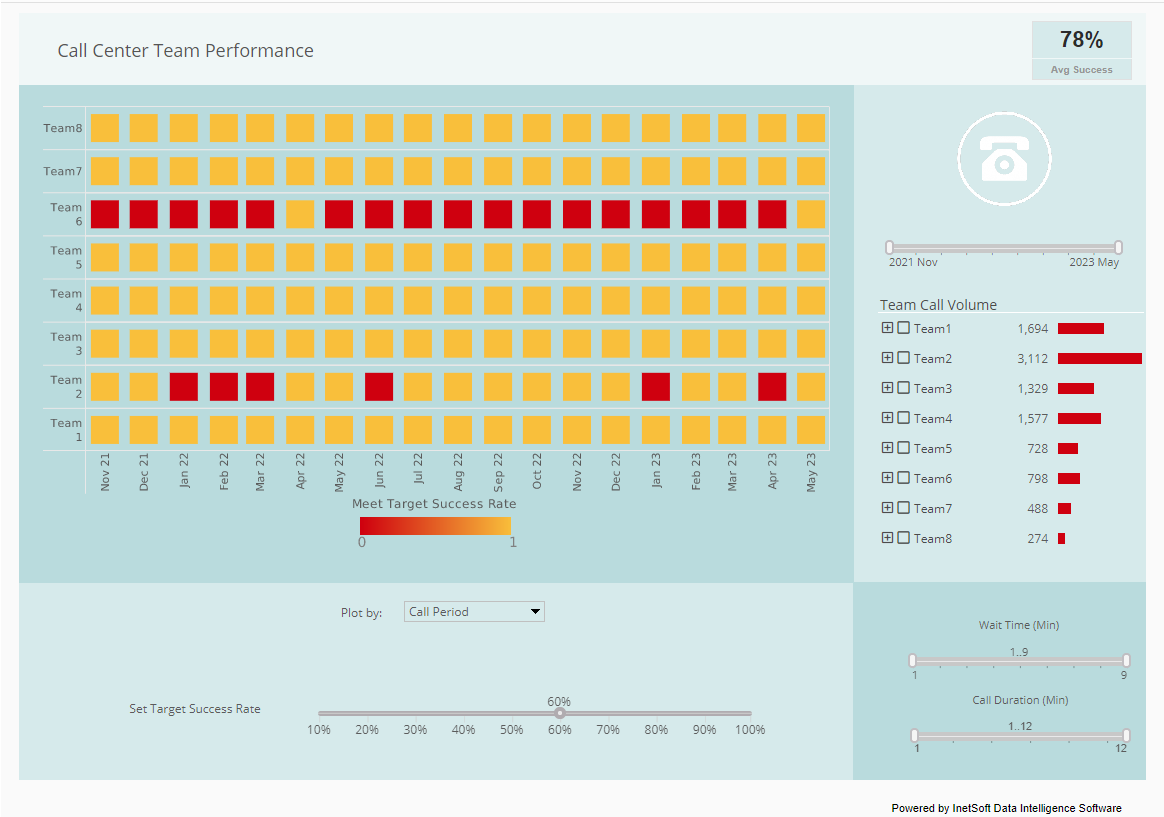Applying Predictive Analytics to IT Performance
This is the transcript of a webcast hosted by InetSoft entitled "Applying Predictive Analytics to IT Performance." The speaker is Mark Flaherty, CMO at InetSoft.
When we say business drives technology, what do we mean by that, and how do you apply that to your business world?
Well, if you look at the advances of technology, over time in the long history of technology advances, sometimes we get a little bit ahead of the business world. Now in the last few years, a big emphasis has been placed on the value that technology can bring to the business. And I really see a maturing in terms of the need for data warehousing. In a long spectrum form, it used to be, at a point in time, a nice to have thing. While we are not at that point now, for the most part, we’re moving towards this kind of business intelligence resource as a have-to-have type of thing.
Business intelligence has really moved into a strategic place. Companies use data essentially to help drive their business, to make better decisions. At the same time, the business itself is changing. For any business, if you read the papers, or take a look at what’s going on, there is always change in business, but now, the change is really accelerating in many ways.
 |
View a 2-minute demonstration of InetSoft's easy, agile, and robust BI software. |
On top of that, you have the Web. You have worldwide exposure. So it’s 7/24 worldwide with constant change. And at the same time, as the value of data warehousing is more appreciated and understood by companies, there is a combination that’s very, very good for the industry. Now, with that combination comes more pressure on the technology to deliver. So for instance, it must be available 7/24. It can’t go down. I need it to run my business. It’s a competitive advantage that I use against other people, using data essentially to better understand my customers and serve them. It puts pressure on the data warehouse that perhaps wasn’t there before.
Now, the new thing, not really new, but new in the last few years is how business intelligence has really become operational. Some of the lines are being blurred between data warehouse and transactional systems. As that happens, all of a sudden, you introduce a lot of the pressures that they didn’t have before: always up, can’t go down, service delivery, multiple different workloads at the same time, and an expanding amount of data. The question then is, how do you deliver the services that are needed by the business that are now strategic, that the business depends on, on a constant basis in an environment that’s constantly changing?
This also means there has to be the ability to monitor it, see it, and understand it, if you can. That has led to evolution over the last handful of years as well, where SLAs are being imposed upon the architecture that supports a lot of what’s going on. I get to hear a lot of stories about the demands that we put on systems. You hear of sub second service level agreements and guarantees from some of the systems. That wasn’t there a handful of years ago. A handful of years ago, we were happy if we could close the month end in under 15 days.
Now if you look at the IT functions in the company, it’s really the only function, in a sense, that waits for something to break, and then moves there quickly to try to fix it.
When people talk about being proactive in this environment, they usually mean planning to react quickly. All these pressures I talked about before make the luxury of waiting for something to break before you fix, it is something you can’t do anymore.
The analogy sometimes I have used in the past is if you have a flat tire, you pulled up on the side of the road, and you changed it. But now if you are in a jet, in flight, thousands of miles high, it’s not something you can do. So you have to look ahead and understand. Any other department in the company has a viewpoint of the future. Finance knows what’s the cash position is. It knows where it’s going. It knows it has a plan. It has a budget.
Manufacturing knows what it’s going to build next week. It knows what it’s doing. It has a view of the future. And that future view helps them to drive their decisions and their plans, and that’s why they are relying more and more on the data, the resources that the data warehouse can provide. So the quick thing is that I see it maturing. I see that building. The question is how can the industry respond to that type of thing?
 |
Read why choosing InetSoft's cloud-flexible BI provides advantages over other BI options. |
